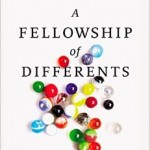The recent fire in a Bangladeshi garment factory that claimed well over 1000 lives was a powerful reminder of how costly “cheap” fashion can be…
Extensive coverage of the the fire and its aftermath from CNN.
Last year, Amy Peterson reviewed Elizabeth Cline’s book Overdressed: The Shockingly High Cost of Cheap Fashion for The Englewood Review of Books. As part of that review, she offered a wonderful list of suggestions for how churches could promote alternative ways of thinking about clothes, a slow fashion of sorts that is rooted in our faith communities.
We are delighted to reprint that list here, some very timely thoughts in the wake of the Bangladesh tragedy.
Cline points toward a number of solutions for the fashion industry, profiling “slow fashion” designers, whose work is inherently more eco-friendly because it is produced in smaller batches, and those who attempt to use responsibly paid labor. Echo Park Independent Co-op, Eliza Starbuck, and Kaight earn her highest praise. Ultimately, she calls upon readers to embrace the role of “stewards” of our clothing, recognizing that it’s up to us to make sure our garments’ next stop will not be a landfill.
For Christians especially, pursuing the freedom of simplicity in our closets ought to be a primary concern. As I’ve wrestled with Cline’s findings, I’ve come up with a list of practical suggestions for churches:
–Stop organizing events around shopping. A few months ago I received an invitation to join a MOPS group for a shopping night at Target. What if we instead organized events around creating, repurposing, or sharing? How about a clothing swap where everyone brings what they don’t wear anymore and is free to leave with whatever they could use?
–Connect to people who have skills and equipment to share. Older people and immigrants often have sewing skills we lack, and sewing machines we can borrow. Why not ask them to teach us? Hold a quilting class, or an Intro to Sewing one Saturday morning in the church.
–Learn about fibers, construction, and quality. Some fabrics are more eco-friendly than others. Find out what they are. Learn to recognize well-made clothes, and when you can, be willing to pay more for them. Expect them to last.
–Refashion. Instead of donating torn and stained clothes, try to repurpose them yourself. You can find dozens of free tutorials online for refashioning clothes – for example, turning a men’s dress shirt into a woman’s skirt, a little girl’s dress, or a pair of toddler elastic waist pants.
–Buy slavery-free. Download the app Free2Work and check before you buy.
–Opt out. We can’t always afford nicer clothes, especially when buying for kids who outgrow their clothes every few months, but we can opt out of consumerism through garage sales, hand-me-downs, clothing swaps, and buying secondhand.
Pursuing simplicity in our consumption of clothing isn’t about ignoring fashion or beauty. God is the source of all beauty, and I believe we reflect him when we make beautiful decisions in the way we clothe ourselves. In refusing to indulge in “fast fashion,” we can make choices that protect the beauty of the earth, that care for the dignity of workers across the world, and that allow us to engage in our God-given desire to create.
Last night my 3 year old, Rosie, pulled on her pink and white nightgown, which my grandmother made more than twenty-five years ago for me. I noticed that a button needs to be fixed, so I’m threading my needle now. It’s a small start, but it’s a first step toward raising my children to be mindful about our possessions and clothing. Lord willing, the nightgown and the convictions will last for the next generation.












